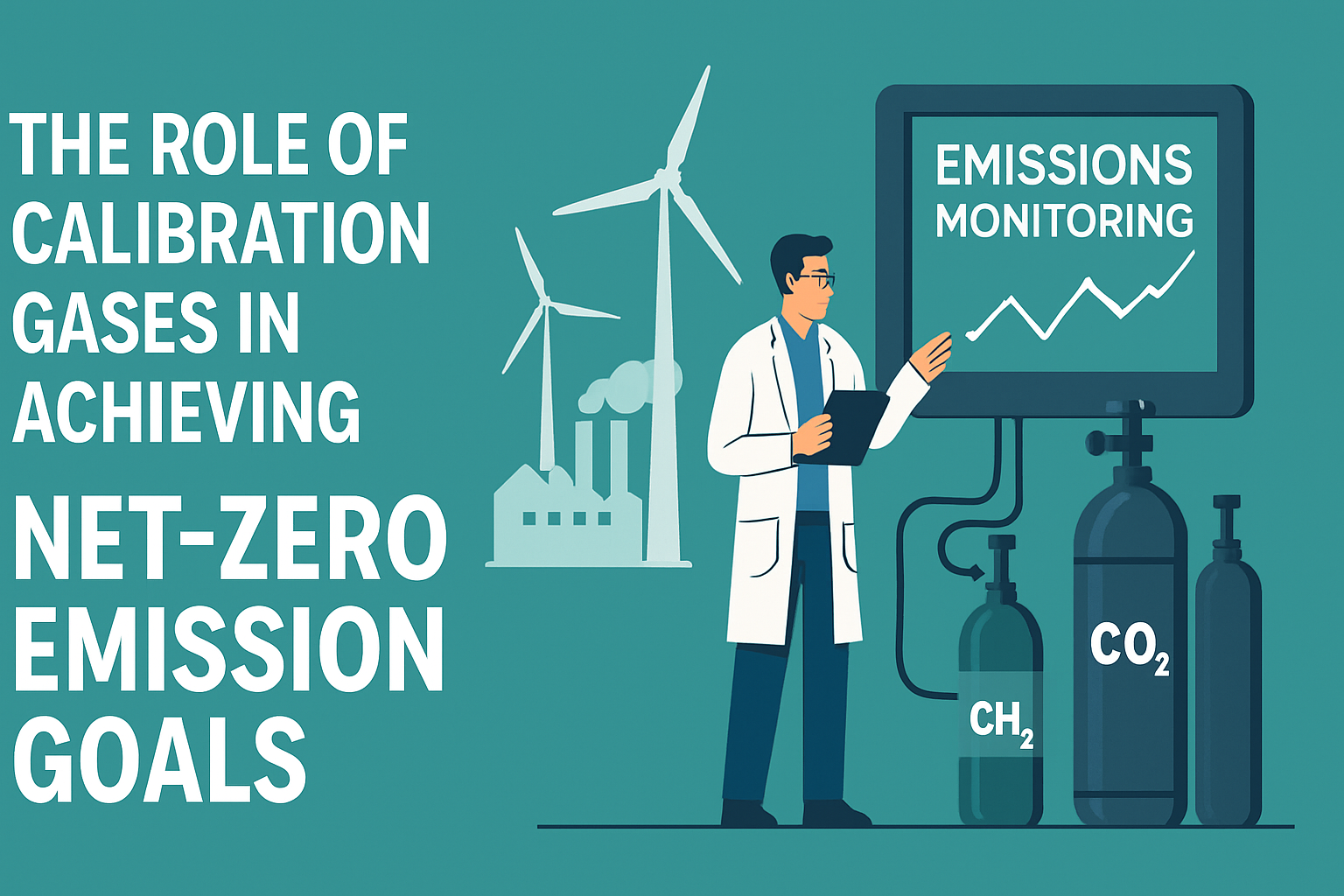
Precision Matters: How Calibration Gases Support Climate Compliance and Industrial Sustainability
As industries accelerate toward net-zero emission goals, precision in monitoring and managing emissions has never been more critical. Calibration gases, though often overlooked, play a fundamental role in ensuring environmental compliance, accurate emission reporting, and optimized industrial processes. These specialty gas mixtures are essential for validating the performance of gas detection and analysis equipment, forming a silent but powerful pillar of the global sustainability drive.
What Are Calibration Gases and Why Are They Important?
Calibration gases are carefully prepared gas mixtures used to calibrate analytical instruments such as gas analyzers, emission monitors, and detectors. These instruments are essential for measuring greenhouse gases (GHGs), toxic emissions, and air quality.
Key Roles of Calibration Gases:
- Ensure Instrument Accuracy – Calibrates sensors and analyzers to maintain consistent and reliable data readings
- Enable Regulatory Compliance – Validates air quality and emissions monitoring as required by environmental agencies
- Support Process Optimization – Helps industries fine-tune combustion, chemical reactions, and energy efficiency
- Enable Transparent Emission Reporting – Critical for industries participating in carbon markets or ESG disclosures
Supporting Net-Zero Through Emission Monitoring
For companies committing to net-zero emissions, the first step is accurate measurement. Calibration gases make it possible to:
- Track real-time emissions of CO₂, CH₄, N₂O, NOx, and SO₂
- Monitor fugitive leaks in oil & gas pipelines using methane-specific gas blends
- Validate ambient air quality near industrial zones or smart cities
- Ensure compliance with standards like ISO 17025, USEPA, and EN 14181
Industries That Rely on Calibration Gases for Net-Zero Alignment
1. Oil & Gas
-
Detect and quantify VOCs, H₂S, and methane leaks using portable and fixed analyzers calibrated with gas mixtures
-
Compliance with OGMP 2.0, PESO, and other emission frameworks
2. Power Generation
-
Validate flue gas analyzers for CO₂, NOx, and SO₂ to optimize combustion
-
Track emissions under carbon credit mechanisms and RECs (Renewable Energy Certificates)
3. Automotive & Transportation
-
Calibration of vehicle emission testing equipment to meet BS-VI and Euro 6 standards
-
Development of hydrogen and CNG-fueled vehicles with accurate gas monitoring systems
4. Industrial Manufacturing
-
Steel, cement, and chemicals rely on calibration gases to measure output gases and improve energy efficiency
-
Supports low-carbon process optimization strategies
Challenges in the Calibration Gas Ecosystem
Despite their importance, the adoption and optimization of calibration gases face challenges:
- Short Shelf Life of Reactive Gases – Certain mixtures degrade faster and require strict storage conditions
- Need for Ultra-High Purity – Even trace contaminants can affect calibration accuracy
- Logistics & Transportation – Pressurized cylinder handling requires PESO-compliant transport and safety checks
- Cost Sensitivity in Developing Markets – High-purity calibration gases can be expensive for small-scale industries
Emerging Trends and Innovations
Innovations are making calibration gases more accessible, sustainable, and effective:
- Low-Carbon Production Techniques – Blending facilities are switching to renewable energy sources
- IoT-Linked Calibration Systems – Automated calibration and remote diagnostics with real-time data logging
- Refillable & Recyclable Cylinders – Reduces environmental impact of disposable cylinders
- Advanced Mixtures for Hydrogen & Biofuels – New blends being developed to calibrate sensors in hydrogen and biofuel infrastructure
India’s Push for Accurate Emission Monitoring
India’s climate action and industrial safety regulations are driving demand for calibration gases:
- 🇮🇳 CPCB and SPCB Guidelines – Mandate certified calibration for continuous emission monitoring systems (CEMS)
- PESO Certification Requirements – Govern gas blending, cylinder design, and transport
- State-Level Emission Trading Schemes – Require consistent emission data backed by traceable calibration standards
- Collaboration with Global Firms – Indian gas companies are partnering with Linde, Praxair, and Air Liquide to meet quality benchmarks
Conclusion: Calibration Gases — The Precision Tools for Net-Zero
As industries commit to reducing their carbon footprint, calibration gases act as invisible enablers of sustainable progress. From emission reporting to cleaner operations, their role in the net-zero journey is indispensable. The future of industrial sustainability will depend not only on innovation but on accuracy, reliability, and data integrity—and calibration gases are the tools that make it possible.




